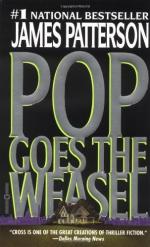|
This section contains 614 words (approx. 3 pages at 300 words per page) |

|
Pop Goes the Weasel, like most serial killer novels, is an amalgam of the classical mystery story and thriller. In serial killer novels, it is necessary for the reader to know the killer, so Patterson uses two narratives, one about Shafer and one by Cross, switching between Shafer's narrative and Cross' narrative as they match wits in the novel.
Shafer's narrative is written from thirdperson omniscient point of view so that we know his thoughts, but we do not sympathize with him. Cross' narrative is written in first person as if he is telling us his story personally, engendering trust and sympathy in the reader. Knowing the motives, or lack thereof, of the serial killer departs from the classical mystery which concentrates on discovering the killer's identity. In serial killer novels, once again, the question is why the killer kills. Patterson tries to explain Shafer's rather nebulous motives...
|
This section contains 614 words (approx. 3 pages at 300 words per page) |

|




